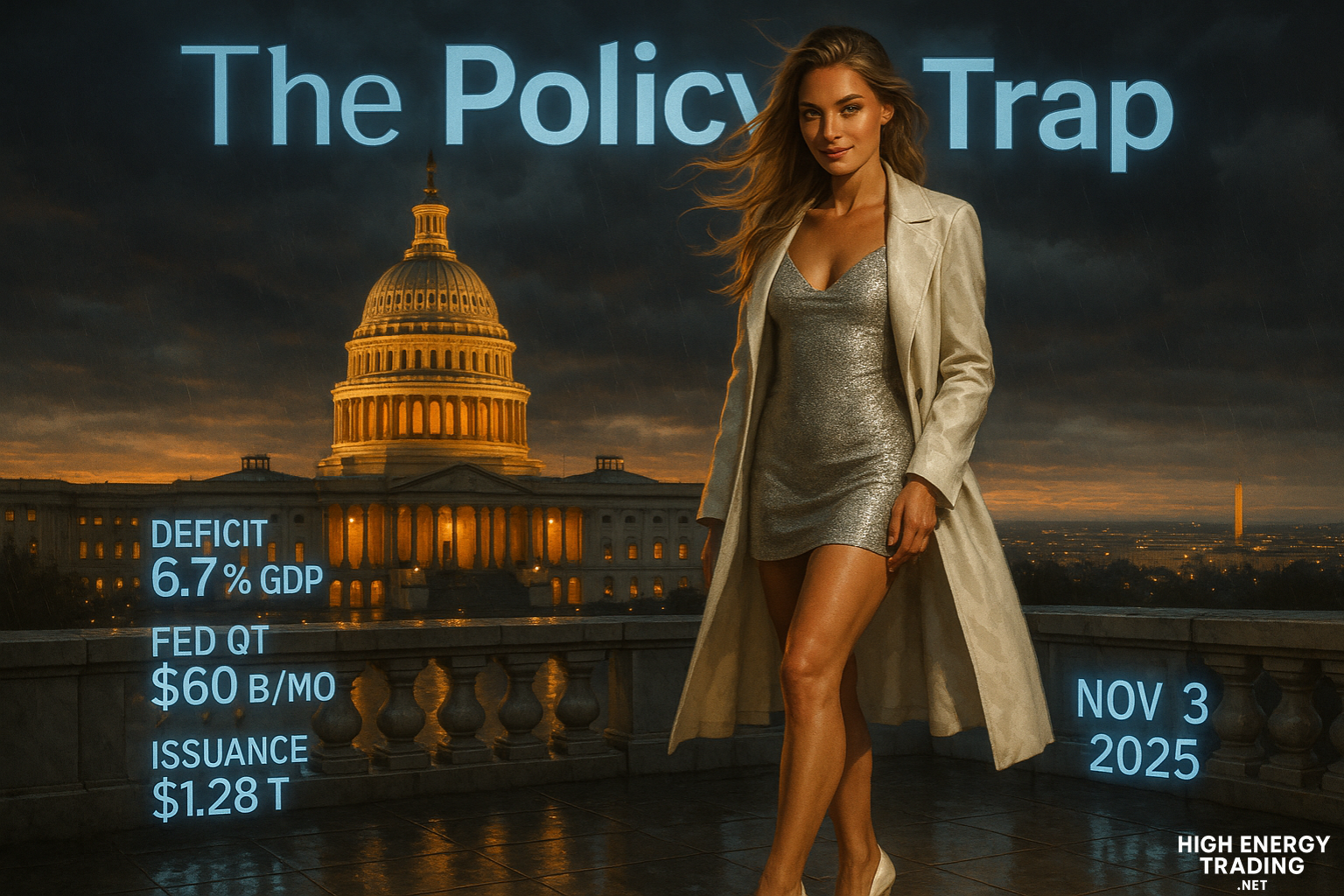The Deficit Double Bind — When Spreads, Yields, and Credibility Collide
The global market may feel settled. But what’s simmering beneath is fiscal stress poised to force a reckoning between bond yields, government budgets, and central bank legitimacy.
It starts with runaway deficits
Major economies are running structural deficits at levels that strain even the mildest growth backdrop. The US Treasury is issuing aggressively across the curve, pressuring long yields amid fading appetite for duration.¹ In Europe and Japan, political fractures are pushing spending higher just as debt burdens peak.²
These deficits are not abstractions. They act as anchors on investor expectations. When deficits grow fast and persistently, markets begin to charge risk premia—not just on credit, but across government curves.
Curve trades are flashing warnings
Investors are circling the yield curve. The steepening trade (betting long yields rise more than short yields) has been a centerpiece in bond strategies this year.³ But recent moves suggest that steepening may become less about growth and more about discounting fiscal solvency.
If long yields reflect higher discount rates rather than optimism about future growth, then an inversion of perspective occurs: curve steepening morphs into a warning. The floor beneath bond markets is softer than it appears.
Central bank independence is under assault
As yields climb, pressure will grow to ease policy faster than inflation or growth data warrant. That tension is already evident in political rhetoric. The danger: markets stop treating central banks as credible arbiters and begin to price policy as pliable.
When yield moves become policy bets more than macro plays, volatility amplifies. Markets hate negotiating regime risk in real time.
Credit and core stress will leak
Add corporate and sovereign credit to the mix. As government borrowing costs rise, competition for capital tightens. Investment-grade credits that once seemed safe may come under duress. Vulnerable sovereigns with weaker balance sheets become canaries in the coal mine.
The worst part: spillovers can cross borders. Weak links in nonbank finance, shadow credit, and cross-asset funding amplify stress, even in economies with stronger fundamentals.
What to monitor over the next several quarters
Deficit trajectories: Watch fiscal updates from the US, UK, EU, Japan. Any rapid upward revisions should be treated as catalysts.
Yield divergence: If 10-, 20-, and 30-year yields rise disproportionately to 2- and 5-year yields, that signals a shift from growth narrative to discount risk.
Central bank signals: Look for pushback or hesitation in tone. Any slippage toward “data dependency” may betray underlying pressure.
Credit spreads and sovereign risk: If IG spreads widen and weaker sovereigns lag, the stress is leaking into real credit.
Cross-market correlation: When equities, credit, bonds, and FX begin decoupling violently, the regime is breaking.
We are not heading toward a collapse, but toward a breakpoint. Markets are not pricing in the fiscal shock wave that lay just ahead. The question is whether policy and credibility can absorb it—or whether this is the moment when the bond world forces the rest of the system to adjust.




